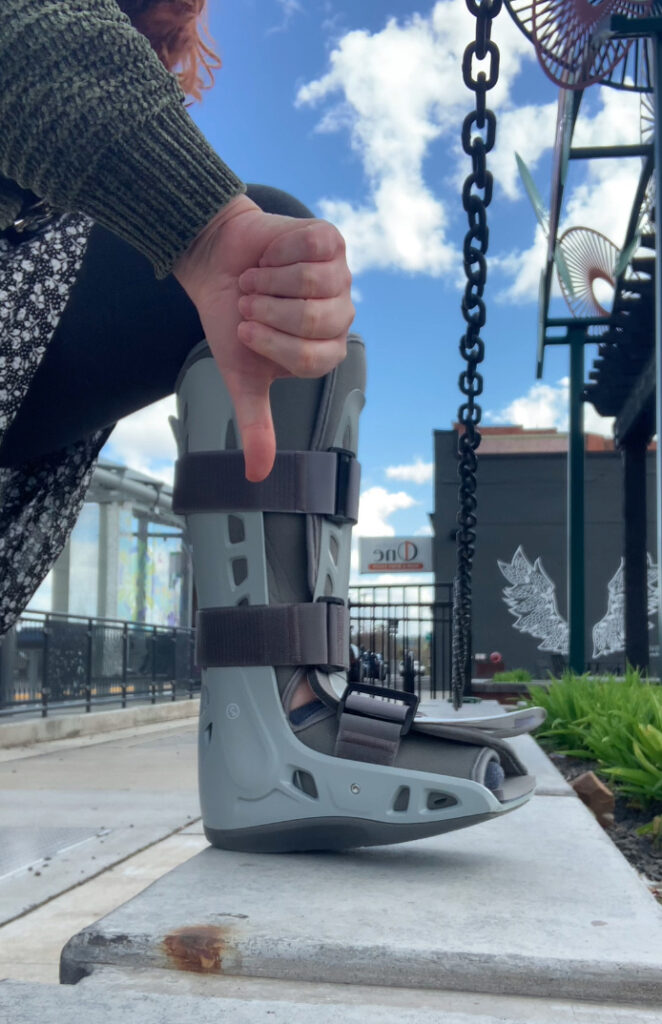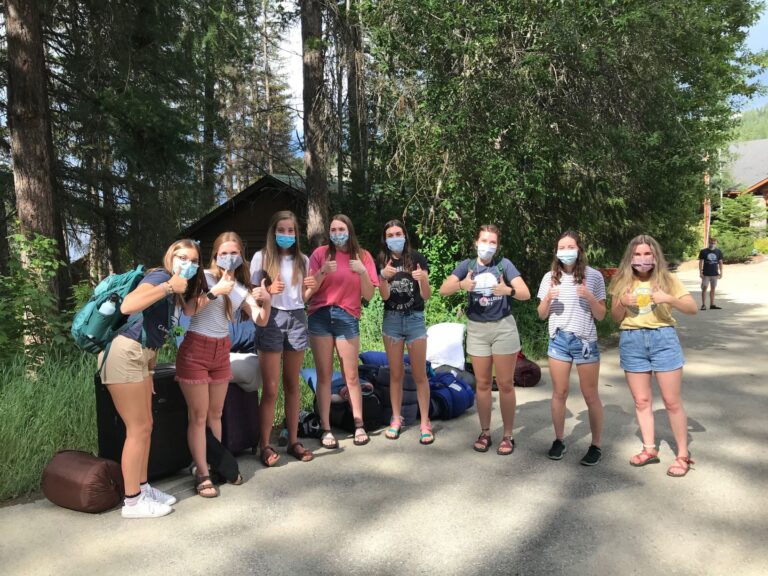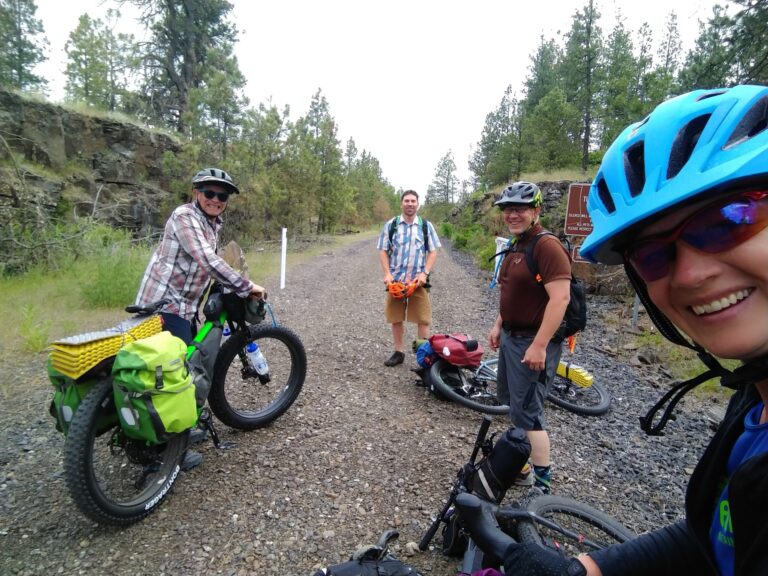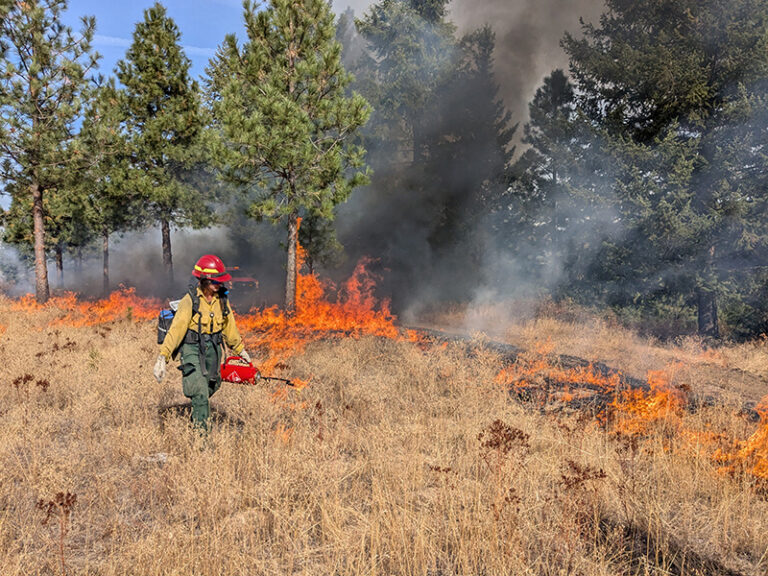By Maura Lammers
Cover photo courtesy of Maura Lammers
About two minutes before I broke my ankle, I had just reached the turn-around point on my run near West Central; two miles down, two to go, as I eased myself into a running routine. Last March, I was gearing up for a big job change and looking forward to doing what I loved more often, including what I was doing at that moment: running on the Centennial Trail on a blue-sky spring afternoon.
That day I was wearing noise-cancelling earbuds, but even with music I could hear the grumble of an engine behind me. I looked over my shoulder and saw a small vehicle speeding toward me on the trail. I did the split-second math you sometimes do when you’re sharing a trail: I was parallel with the two walkers to my right, and since someone was coming up fast, I should scoot to the right. Who knows what kind of calculations the driver made—but, of course, anything with an engine didn’t belong on the Centennial Trail to begin with. The impact was violent and sent me careening sideways to the edge of the trail.

Maybe my body rolled from the crash, or maybe I skidded across the pavement; I don’t remember. I do remember pressing myself up on my hands, and everything throbbing, and turning back to look at my bloody ankle in a daze. Much of what happened I pieced together with help from the two walkers who stayed with me, a couple named Amme and Dave. The scene turned into a hit-and-run when the kids on motorized bikes fled, and Dave called 911 and followed them. Thanks to adrenaline, I was in pain but managed to stand up after a few minutes and, leaning on Amme for support, limp my way to the nearest street where a friend could pick me up.
What followed was a series of medical mishaps mixing terribly with my own stubbornness. Despite my description of the accident, the providers at urgent care chose not to request an x-ray. For about three weeks, I self-medicated with ibuprofen and ice, marveling at my swollen ankle and the impressive handlebar-shaped bruise on my right butt cheek.

When I finally followed up with my PCP and showed her my ankle, she ordered an x-ray immediately. When the x-ray tech showed me the image of my fractured fibula, he wisely said: “It’s always women who say nothing is wrong when something is broken.” Since the fibula is not a weight-bearing bone, that explained why I was able to walk, albeit with notable discomfort. After a few more appointments with orthopedic specialists who gave conflicting opinions, I settled with one who was confident that the break did not require surgery. Now all I needed was rest and physical therapy.
Over the next six months as I healed, graduated from PT, and slowly started training for a comeback 10K, I reflected on an important element of running: discomfort. When you’re a runner, you learn to tolerate discomfort. When you’re a female runner, that’s doubly true, when combined with monthly menstrual pains and our socialized grin-and-bear-it tendency. Famously, runners thrive on this brand of “Type II Fun,” where you’re miserable in the moment but enjoy even the worst run in hindsight.
After my fibula fused back together and I could run again, I had to carefully explore the edges of discomfort: was this pain productive, or was I overtraining and pushing myself too hard? Was this discomfort healthy or unhealthy? Yes, I could withstand pain, but that didn’t mean I should. Likewise, I had to explore where my notions of strength and weakness came from, and how this led to me denying the severity of my injury. Like most women, I grew up hearing I was too sensitive. I had disproven this run after run, stomping all over a notion of weakness that began as societal and then became a self-imposed prison. Really, this denial of sensitivity didn’t make me any stronger; it just meant I didn’t listen to my body.
This March, I’ll hit the one-year anniversary of the accident, and I’ve toyed with signing up for another big race to celebrate. Regardless of whether I reach another race milestone, I hope to usher in a new season of running where I can test the limits of my joy instead of the limits of my discomfort.
Maura Lammers is a writer and runner who has some cool scars on her right ankle.













